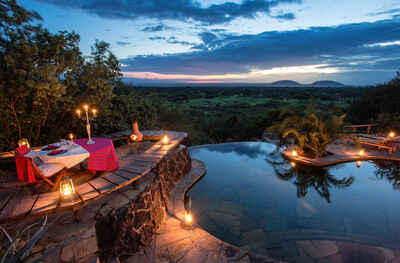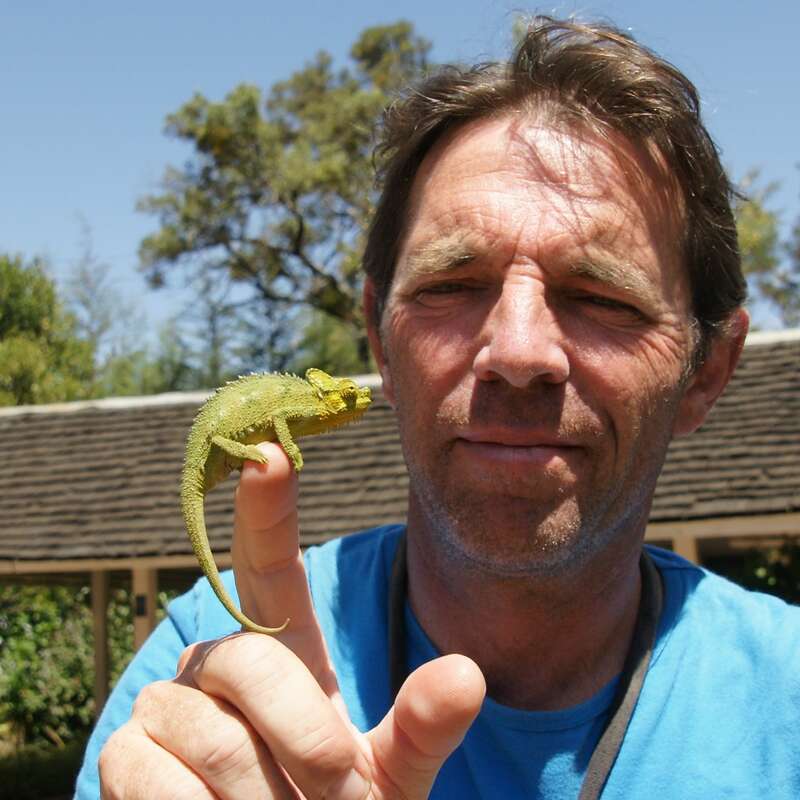About Ol Donyo Lodge
Ol Donyo Lodge (formerly known as Ol Donyo Wuas), is located on the south-western flank of the volcanic Chyulu ...
... Hills, on the 1,000km² Mbirikani Group Ranch, facing Kilimanjaro across the savannah. A safari lodge originally built in 1987 by bush pilot and conservationist Richard Bonham, it was transformed in 2008 into a designer safari base for horseriding, bush walking and game drives.
The spectacularly chic Ol Donyo Lodge is one of Kenya’s most outstanding bush lodges. We love the magnificent views, the real flair in the graceful, earthy design and the beauty and fascination of the environment. The lodge’s conservation work and their engagement with the local Maasai seem great – though we hope that they solve their water supply problem, as it is a fly in the otherwise excellent ointment.
Our view
The spectacularly chic Ol Donyo Lodge is one of Kenya’s most outstanding bush lodges. We love the magnificent views, the real flair in the graceful, earthy design and the beauty and fascination of the environment. The lodge’s conservation work and their engagement with the local Maasai seem great – though we hope that they solve their water supply problem, as it is a fly in the otherwise excellent ointment.
Accommodation
11 rooms
Children
Best for older children.
Open
All year
Activities

4WD Safari

Birdwatching

Cultural excursion

Guided walking safari

Horse-riding

Night drive

Private activities

Sleeping under the stars
Traveller reviews of Ol Donyo Lodge
2 real, un-edited reviews from Expert Africa's travellers.
Arrived 28 Jan 2025, 4 nights
"Ol Donyo Lodge review"
Overall rating: Good
Arrived 2 Jan 2017, 3 nights
"Fantastic lodge in a stunning location"
Overall rating: Excellent
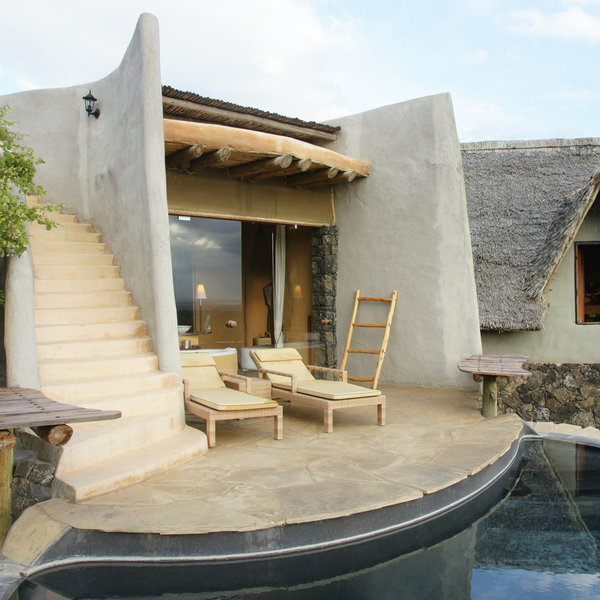
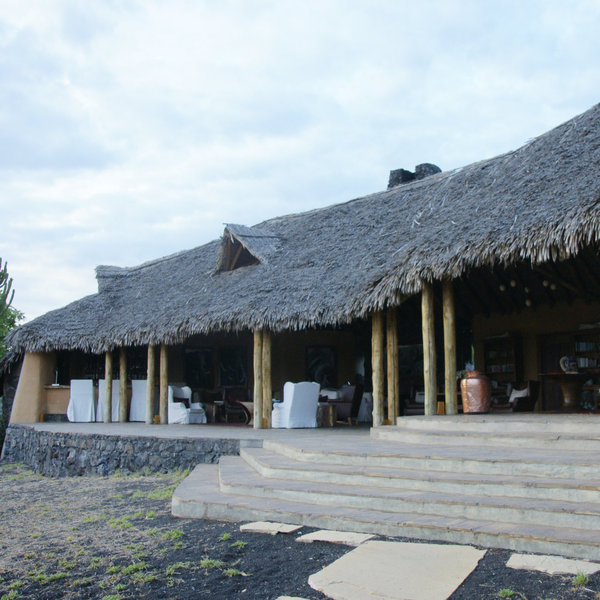
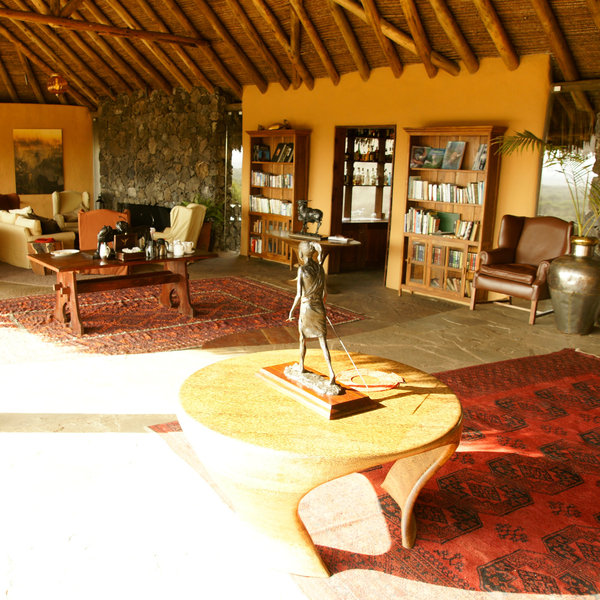
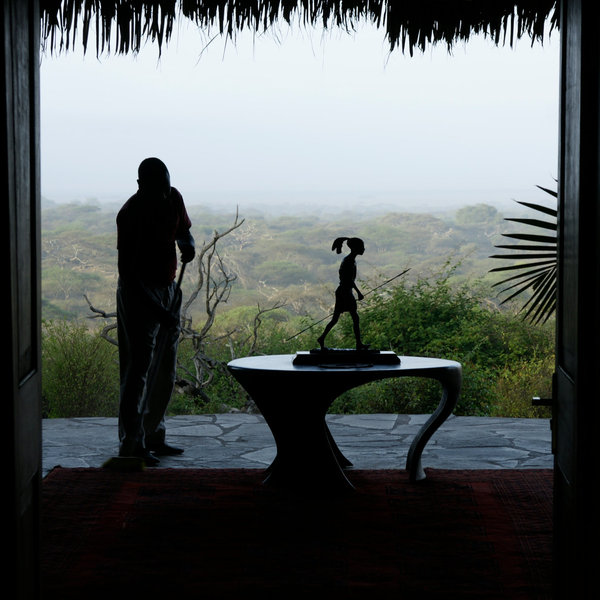
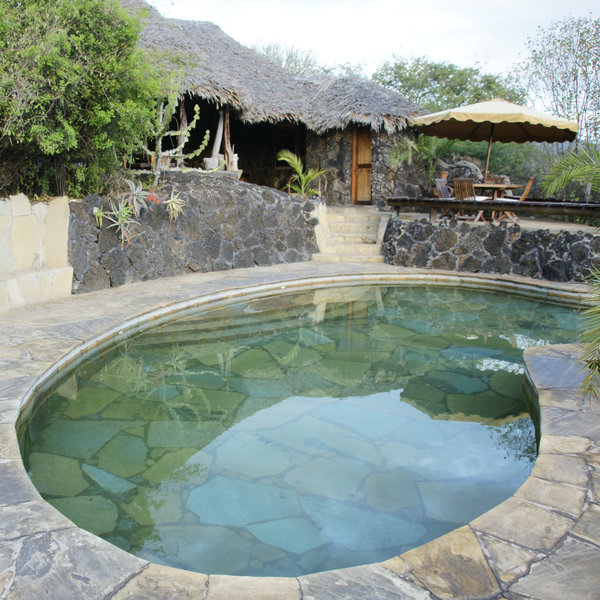
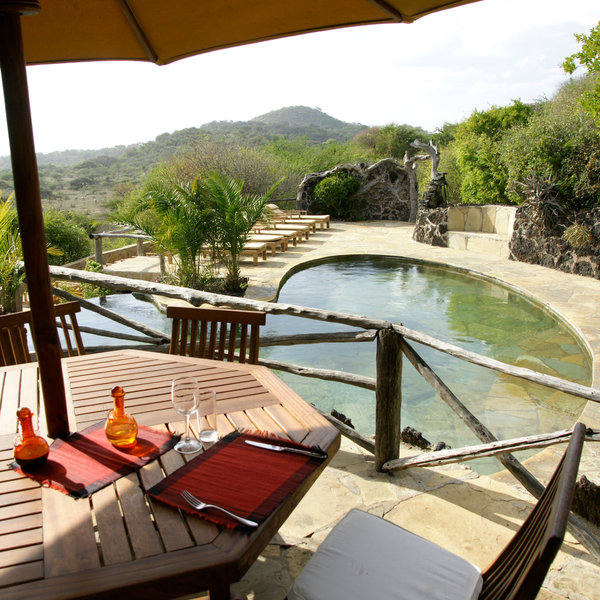
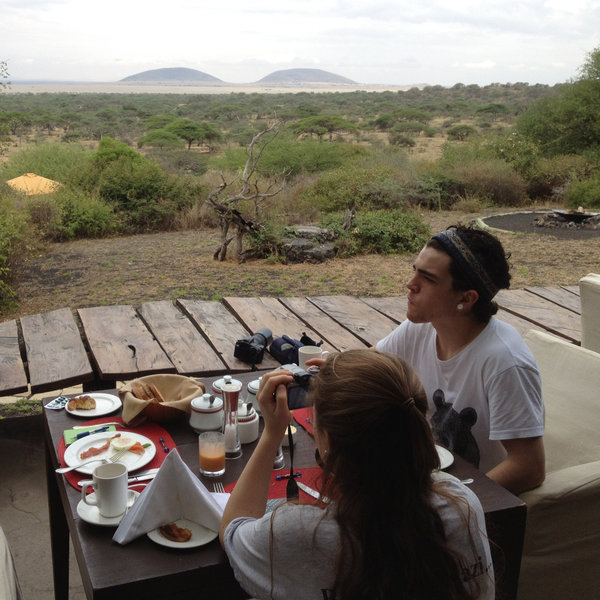
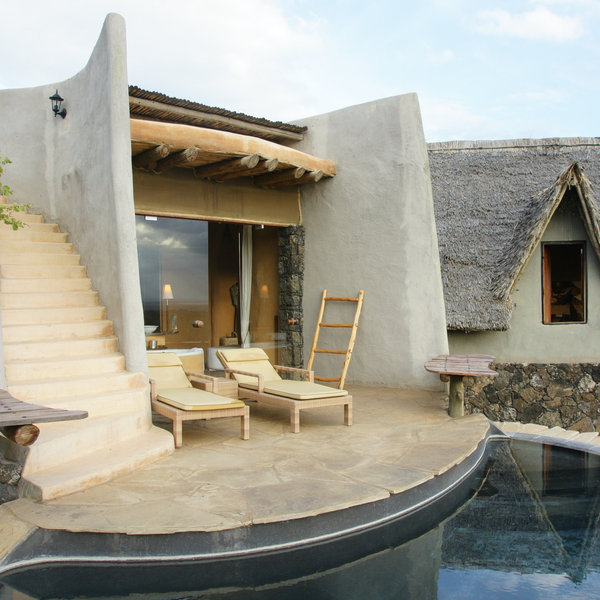
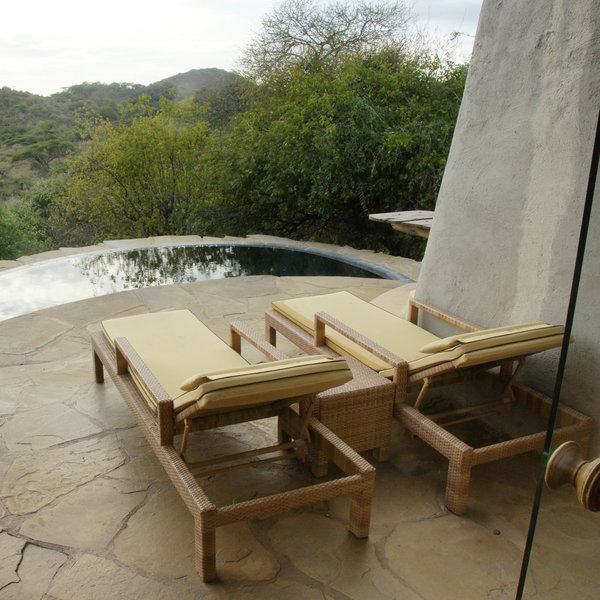
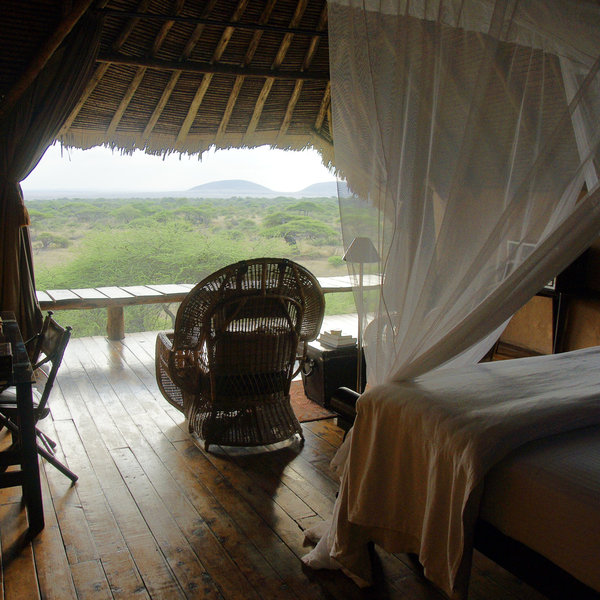
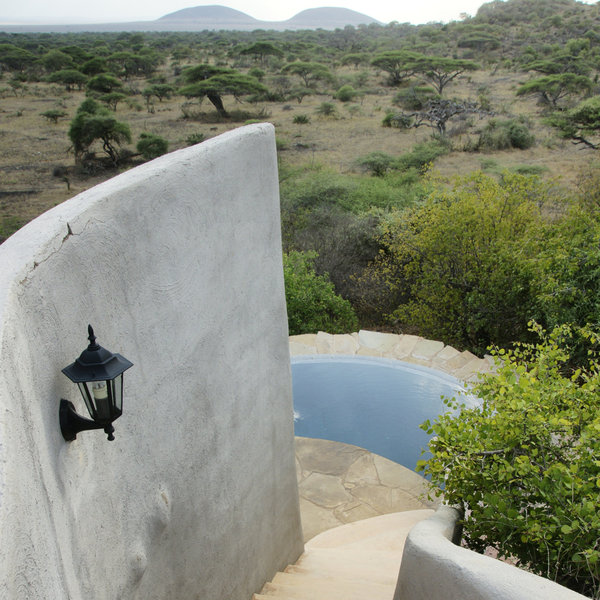
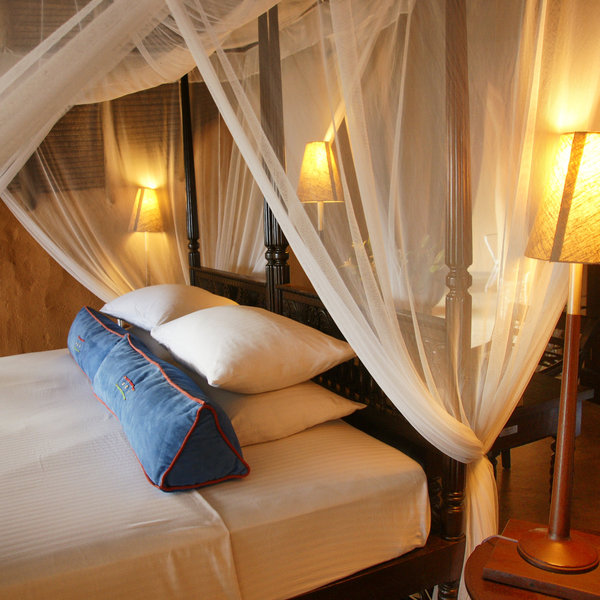

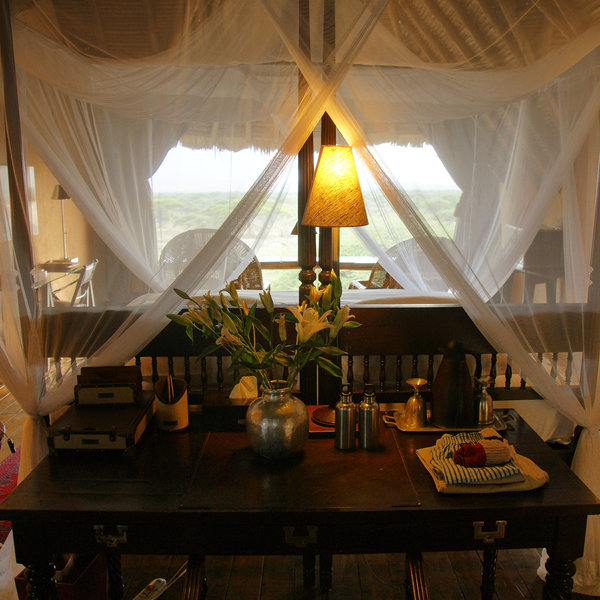
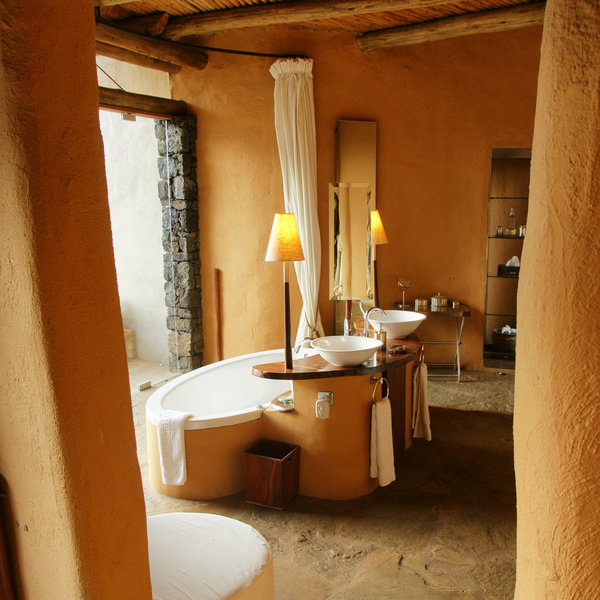
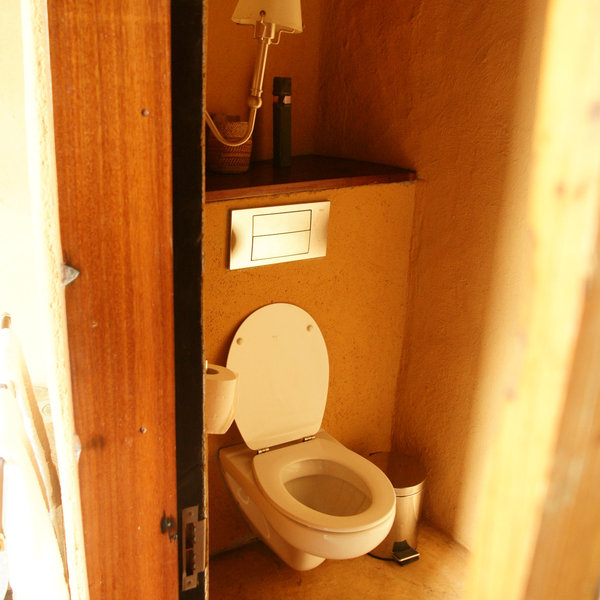
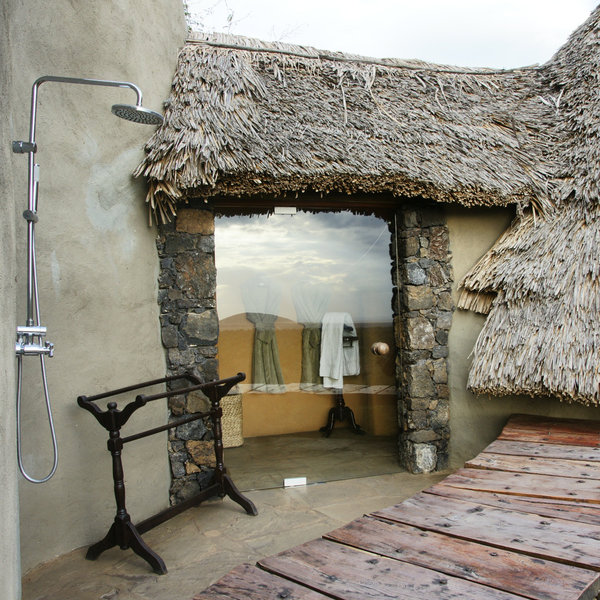
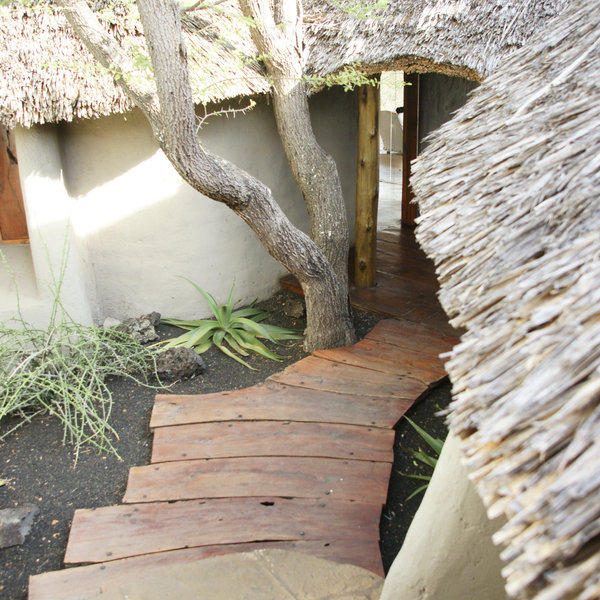
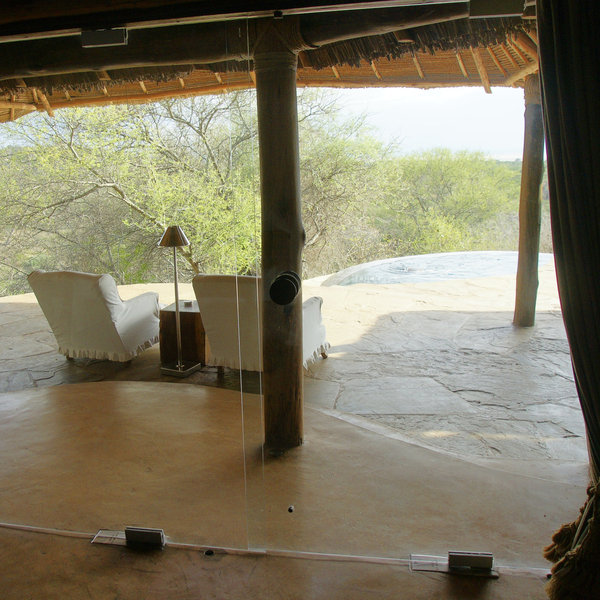
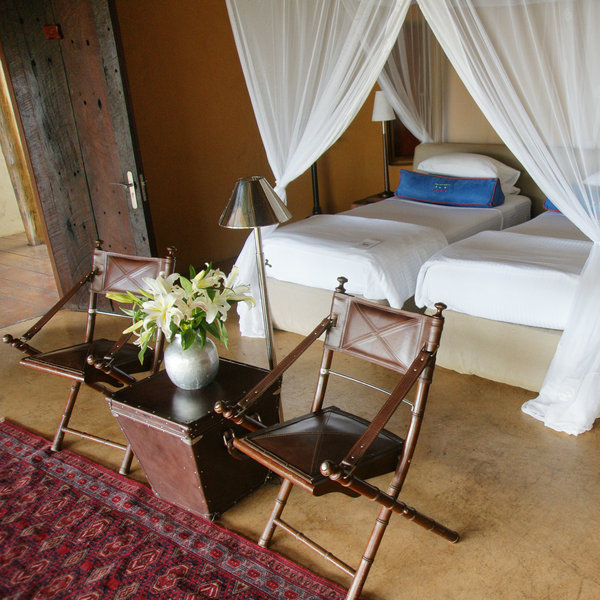
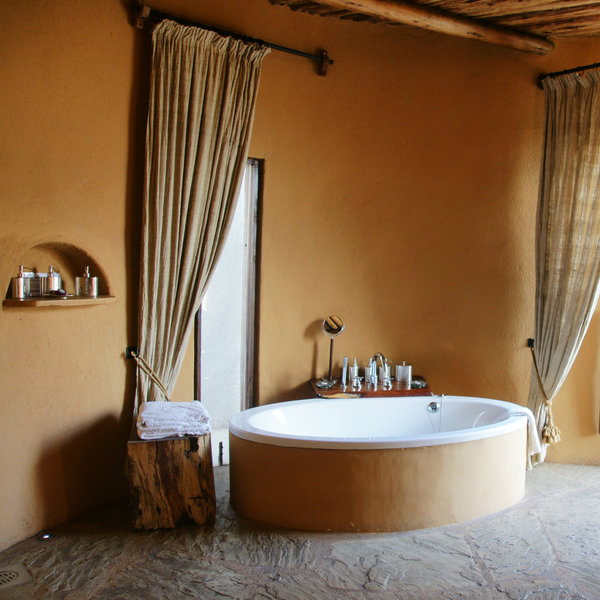
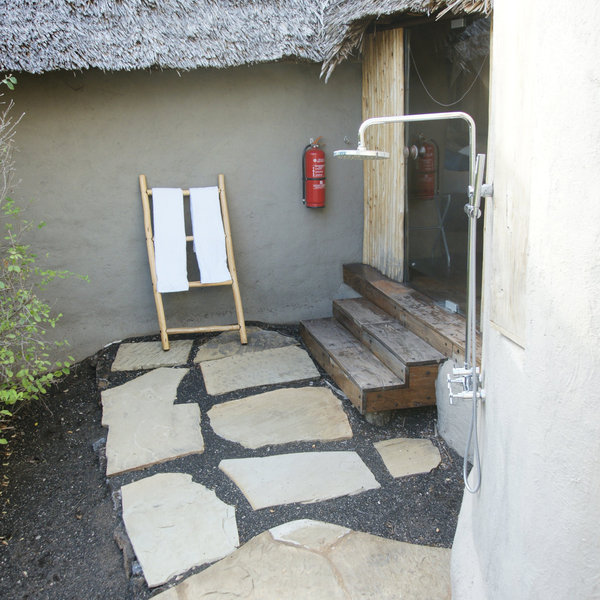
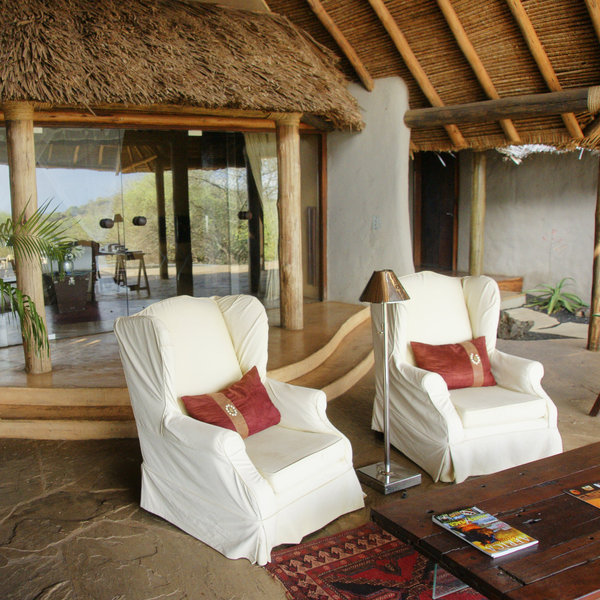
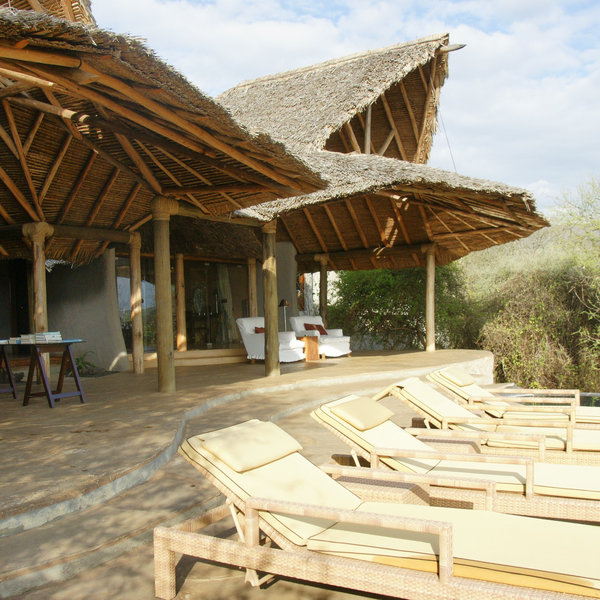
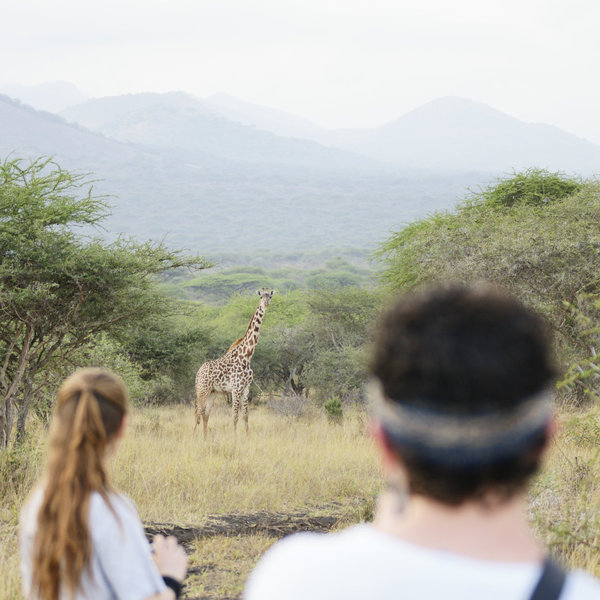
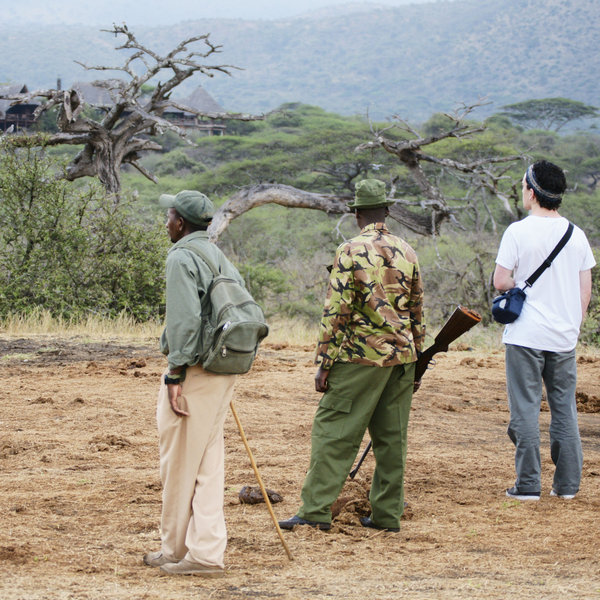
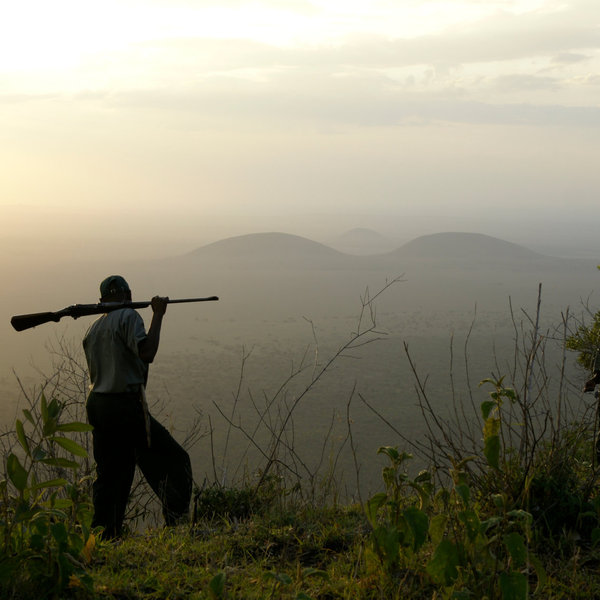
Expert Africa's gallery
When we travel we take lots of photos ourselves to give you a real and un-edited view of the safaris. See our 27 pictures of Ol Donyo Lodge to get the candid view.
View galleryOl Donyo Lodge: Our full report
Ol Donyo Lodge (formerly known as Ol Donyo Wuas), is located on the south-western flank of the volcanic Chyulu ...
... Hills, on the 1,000km² Mbirikani Group Ranch, facing Kilimanjaro across the savannah. A safari lodge originally built in 1987 by bush pilot and conservationist Richard Bonham, it was transformed in 2008 into a designer safari base for horseriding, bush walking and game drives.
Driving from the airstrip, you can see the lodge up on the hillside for some time before the final winding track through dry woodland brings you to the central guest area. This is focused on a magnificent lounge and terrace, with a sweeping panorama, and a baronial dining room. Across the drive is a small office-cum-internet room, while the breakfast terrace and swimming pool are a few steps down from the lounge terrace, with impressive views across the bush and down to three waterholes.
The ten very spacious suites at Ol Donyo Lodge are situated in six separate ‘villas’. Each suite has its own lounge and veranda, indoor and outdoor showers, a bath, a flush loo and twin washbasins. From the veranda, a stone staircase leads up to a rooftop sundowner terrace-cum-sleeping platform, complete with a mosquito-net-covered four poster ‘star bed’ (though note that you need to give some notice if you intend to sleep up there).
The six villas have three different configurations:
The "pool rooms" are in the three villas ranged along the flank of the hill to the northwest of the central part of the lodge. They're callled Sirra (pool rooms #1 and #2), Nyati ("pool rooms #3 and #4), and El Mau (pool rooms #5 and #6) with Sirra being closest to the central areas of the lodge and El Mau being furthest away - though in fact only about 150m away. Each villa incorporates a pair of suites, each with twin beds or a double, depending on guests’ requirements. Each pair of suites is connected via an outside foyer, and each suite has its own small plunge pool (ie two per villa, with no visual contact between the two pools). While working very well as private, individual suites, these villas work equally well when the two suites are taken together for a larger group or an older family.
The "non-pool rooms" are two stand-alone suites, Asali (non-pool room #1) which is around 150m southeast of the main central lodge area, and Mpya (non-pool room #2), which is much closer to the central areas, near the main swimming pool. These rooms are similar to the "pool rooms" except in one respect – they have no plunge pools.
The larger villa, Sambu, located between the central areas and the Asali suite, is a set-up designed for a group or family, with two en-suite bedrooms under a single roof and its own, slightly larger plunge pool.
The furnishings at Ol Donyo Lodge are a triumph of stylish-rustic, with generously over-sized mosquito nets, swing doors of heavy glass, stand-alone baths and washbasins, rainfall showers, dark wood chairs and tables, wicker armchairs and cushions, tall bedside lights, and mirrors hanging on cables from the ceiling. The curved walls are decorated with large prints of the ethnic photo portraits of Carol Beckwith and Angela Fisher. And the grounds around each villa are the natural black, volcanic gravel of the region, which contrasts so strikingly with the wood and thatch and pale cream-, grey-, or orange-coloured walls of the villas’ architecture, and looks particularly striking during the growing season, with planted and naturally growing native shrubs, succulents and other plants bursting forth.
Everything about Ol Donyo Lodge is a delight to the eye, and the private plunge pools, each with its own infinite view across the plains, are a wonderfully hedonistic indulgence. Ensuring the privacy of these and the roof tops is a feat of design that Ol Donyo has pulled off very impressively.
A wealth of activities is available at Ol Donyo Lodge and included in the rates, and the list seems to get longer each year. The latest is mountain-biking, accompanied by a pedalling armed guard, allowing you to get close to plains grazers such as zebra, wildebeest and giraffe. Bush walks – either down the hill towards the plains, or up into the green hills, and again always accompanied by at least one armed guard – are also popular. There’s a cleverly constructed open-air hide – the ‘log-jam’ – below the lodge where you can often watch elephants and other big game from close quarters as they drink at one of Ol Donyo’s waterholes. Game drives, both during the day and after dark, are also popular. Keen photographers may want to pay extra for exclusive use of a vehicle and guide, which includes the loan of a Canon EOS 50D camera with 17–85mm and 100–400mm zoom lenses.
However, Ol Donyo Lodge’s stand-out activity is game viewing on horseback, with a stable of 20 horses, suitable for various abilities. When you discover you’re not quite as used to being on a horse for several hours as you thought, the lodge can offer massages with a trained masseuse in your room (at extra cost). If you're a more experienced rider, the lodge now offers a flycamp option on horseback.
Ol Donyo does important work with the Maasailand Preservation Trust. Set up by Richard Bonham, the trust, now part of the Big Life Foundation, has helped to engage the Maasai community with their wildlife heritage and to see wild animals as an economic asset, while also helping them to cope with wildlife-human conflict. It has also been active against poaching, not just of elephants, but critically of black rhino. The last wild-roaming black rhino in Kenya hide in the dense thickets of the Chyulu Hills, closely guarded by rangers supported in part by funds from visitors to the lodge.
It’s a pity, then, that Ol Donyo Lodge’s own environmental credentials fall at the first hurdle: all its water requirements – some 20,000 litres every day – are hauled up daily from the highway in a huge bowser. We would hope that they would investigate the option of capturing water from the heavy rains that fall on the lodge several times a year.
Activities
4WD Safari
Birdwatching
Cultural excursion
Guided walking safari
Horse-riding
Night drive
Private activities
Sleeping under the stars
Families & children
- Attitude towards children
- Ol Donyo Lodge has a positive attitude to guests bringing children aged 5 and above.
- Property’s age restrictions
- 5
- Special activities & services
- Cycling and bush walks are options only for children over 10.
Riding in the bush is usually only available for experienced riders over 12. Novice riders and all under-12s must demonstrate their ability around the arena at the stables before being allowed to accompany other riders. - Equipment
- None
- Generally recommended for children
- We do not generally recommend Ol Donyo Lodge for younger children. Most guests at Ol Donyo are adults and the atmosphere is quite grown-up and a little more formal than at most safari lodges. There are no obvious areas to let off steam and there are quite a lot of potential fall hazards, with drop-offs. However, older, outdoors-loving children who are keen naturalists will love it here and can participate in most of the activities.
Food & drink
- Usual board basis
- Full Board & Activities
- Food quality
- Guests at Ol Donyo Lodge may choose to eat separately or together.
Breakfast, available 7.00–9.30am, includes the usual hearty cooked options as well as fruit, cereals, pastries, fresh bread and yoghurt.
Lunch, a light, three-course buffet, is served 1.00–2:30pm, and usually includes a variety of dishes, such as spaghetti carbonara, mixed pizzas, Waldorf, green and Russian beetroot salads, and a cheeseboard, with ice cream and tuiles biscuits.
Tea and cakes are available in the lounge from 4.00pm.
Dinner is usually served from 8.00pm and there is always a vegetarian option. The menu when we stayed started with a Kenyan classic – feta and coriander samosas with sweet chili sauce – and was followed by stuffed chicken breasts with sundried tomatoes, turned potatoes, french beans and carrots. We could also have tucked into the pumpkin risotto or had grilled pork fillets with boulangère potatoes, caramelised pears and mangetouts with onion sauce. Pud was a tangy and frothy lemon meringue pie. The coffee was served with truffles on the terrace, listening to the night sounds. Not a bad way to end a day in Kenya. - Dining style
- Group Meals
- Further dining info, including room service
- Room service can be requested during the times of day that the kitchen is staffed, but there are no phones in the suites, so it would need to be arranged in advance.
- Drinks included
- All drinks are included, except premium spirits, Champagne and cellar wines, which are available at extra charge.
Getting there
- Location
- Amboseli and the Chyulu Hills, Kenya
- Ideal length of stay
- 3 nights; longer for riders
- Directions
- A good scheduled local airline flies to Ol Donyo airstrip (about an hour, depending on route), where guests are met by a vehicle from the lodge for the 30-minute transfer (longer if you pause to watch wildlife).
- Accessible by
- Fly-and-Transfer
Special interests
- Honeymoons
- Ol Donyo offers an exclusive, luxurious and romantic honeymoon safari in Kenya. Six rooms have their own plunge pool, and a roof deck where you can spend a night sleeping under the stars. It’s a very stylish lodge, and clearly designed with your privacy and comfort in mind.
- See ideas for Honeymoons in Kenya
- Riding safaris
- Ol Donyo Lodge is probably the best place for riding holidays in Kenya, and is a working stud. Its 20 horses offer superb riding for almost all aboility levels. Discover this fascinating landscape on horseback, with the impressive Kilimanjaro as your backdrop.
- See ideas for Riding safaris in Kenya
- Luxury safaris
- The very stylish and roomy suites at Ol Donyo Lodge offer plenty of luxurious amenities and unusual features, including private plunge pools and roof terraces for sunbathing or spending a night under stars. The lodge offers a wide range of activities and has superb riding stables.
- See ideas for Luxury safaris in Kenya
Sustainability
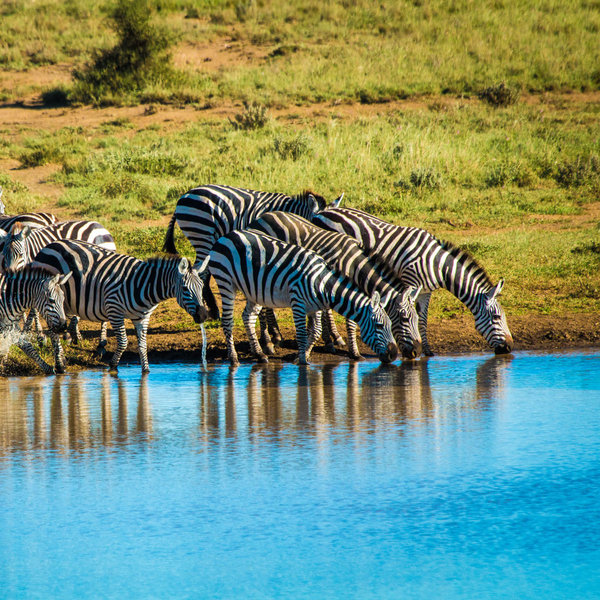
Social development in the Mbirikani Community
Located on the private 275,000-acre Mbirikani Group Ranch in south-eastern Kenya, Ol Donyo Lodge can accommodate up to 16 guests, making it a suitable retreat for families. Full lease fees as well as a per person conservancy fee go directly to a community of 4,000 Maasai based on the promise that the lodge will ensure the conservation of the ranch and the wild animals which call it home.
In complying with the agreement, Ol Donyo Lodge has partnered up with ‘The Great Plains Conservation – Big Life Foundation’ to design conservation and community development strategies.
One of the first projects they launched has facilitated the establishment of two primary schools and one boarding school on Mbirikani Group Ranch, providing education to over 300 students per year. Additionally, a note-worthy number of classrooms was constructed while facilities for existing schools were renovated, as well as 20 government-certified teachers’ salaries being sponsored annually. Guests are invited to contribute to the project by packing school supplies, reading materials and toys that can be donated during a visit at the local schools.
Another social initiative is the Mbirikani Community Game Scouts which employs 158 full-time community game scouts who are trained to combat poaching activities, resolve human-wildlife conflict, keep river systems flowing, monitor lion movement, and facilitate the trusts’ Predator Compensation.
See more great sustainability projects in Kenya
Communications
- Communications
- There are no room phones. Cellphone reception (both Safaricom and Airtel) is usually available around the lodge, but can be patchy and intermittent. There is unlimited, free guest WiFi and a laptop for guests’ use is available near the main lounge.
- TV & radio
- None, though for major events, such as the World Cup, guests sometimes visit the staff lounge.
Health & safety
- Malarial protection recommended
- Yes
- Dangerous animals
- Security measures
- There are Maasai askaris around the lodge day and night.
- Fire safety
- There’s a fire extinguisher in every suite. The staff receive an annual fire-training session.
Useful info
- Disabled access
- Not Possible
- Laundry facilities
- Full Laundry Service - Included
- Money
- Ol Donyo Lodge doesn’t offer foreign currency exchange. There are safes in every room and larger valuables can be stored safely with the management.
- Accepted payment on location
- Ol Donyo Lodge accepts cash for extra payments in US dollars, euros, pounds sterling and Kenyan shillings. Visa and MasterCard are the only credit cards accepted, both with a 5% surcharge.
Plan and book your trip with Expert Africa
All of our trips are tailor-made, so we'll always adapt them to suit you. Talk to an Expert and let us plan and arrange your perfect trip.

Talk to an Expert
Call or email us now! We’ll match you with the Specialist in our team who is best suited to help you. Then together we can start planning your trip.

Set up your itinerary
Based on our experience and your ideas, your specialist will create a detailed, costed itinerary. We’ll refine it together, until we have a trip that you’re perfectly happy with.

Prepare for your trip
The same Specialist will make the seamless arrangements for your trip, send you detailed travel documents, and be available to answer any questions before you depart.

Travel with peace of mind
After you set off, you’ll be cared for by our partners in Africa, most of whom have worked with Expert Africa for decades. And if you ever need us urgently, we’re available 24/7.

When you return
We love to learn about your trip, and so will always be grateful if you’ve the time to give feedback to your Specialist when you return.
Ol Donyo Lodge's location
Look closer at the environment and surroundings of Ol Donyo Lodge.
Other lodges in Amboseli and the Chyulu Hills
Alternative places to stay in this same area.
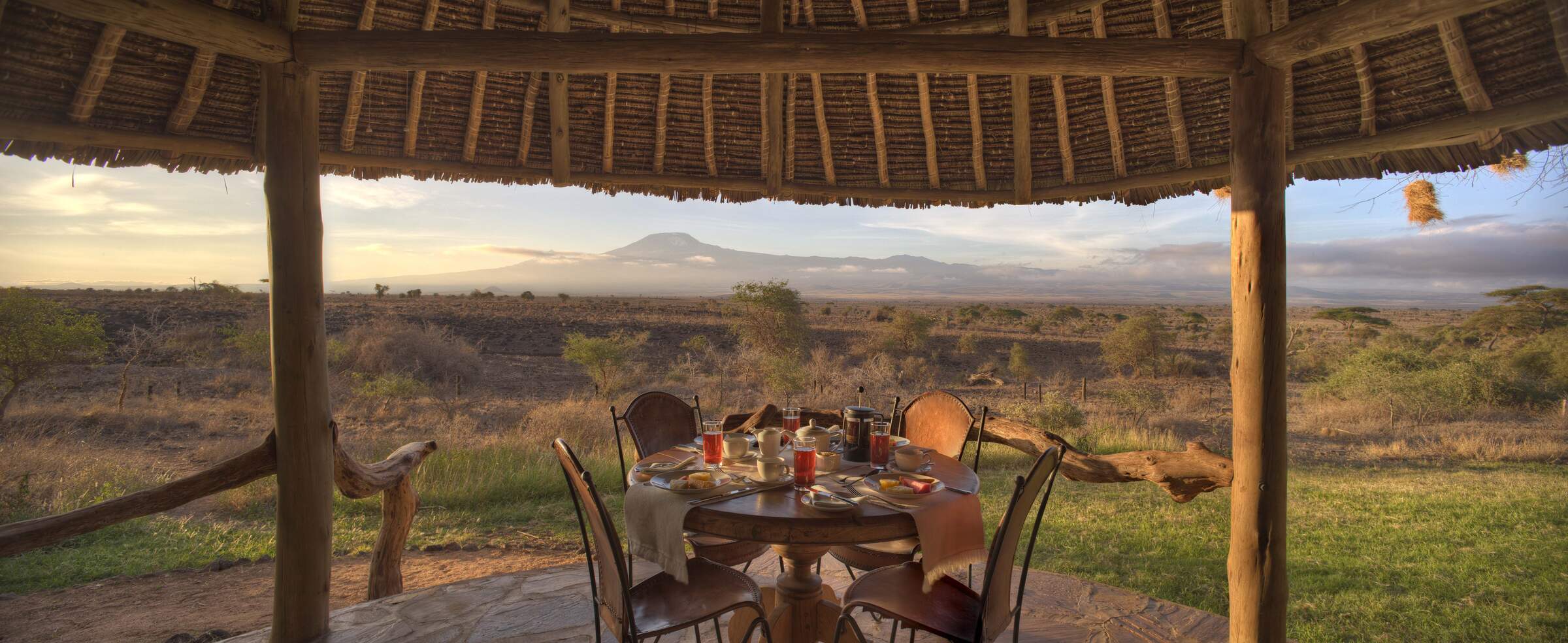
Tortilis Camp
Tortilis is a finely situated and well built safari camp located in the private Kitirua Consarvancy just outside Amboseli National Park and with wonderful views of Kilimanjaro.
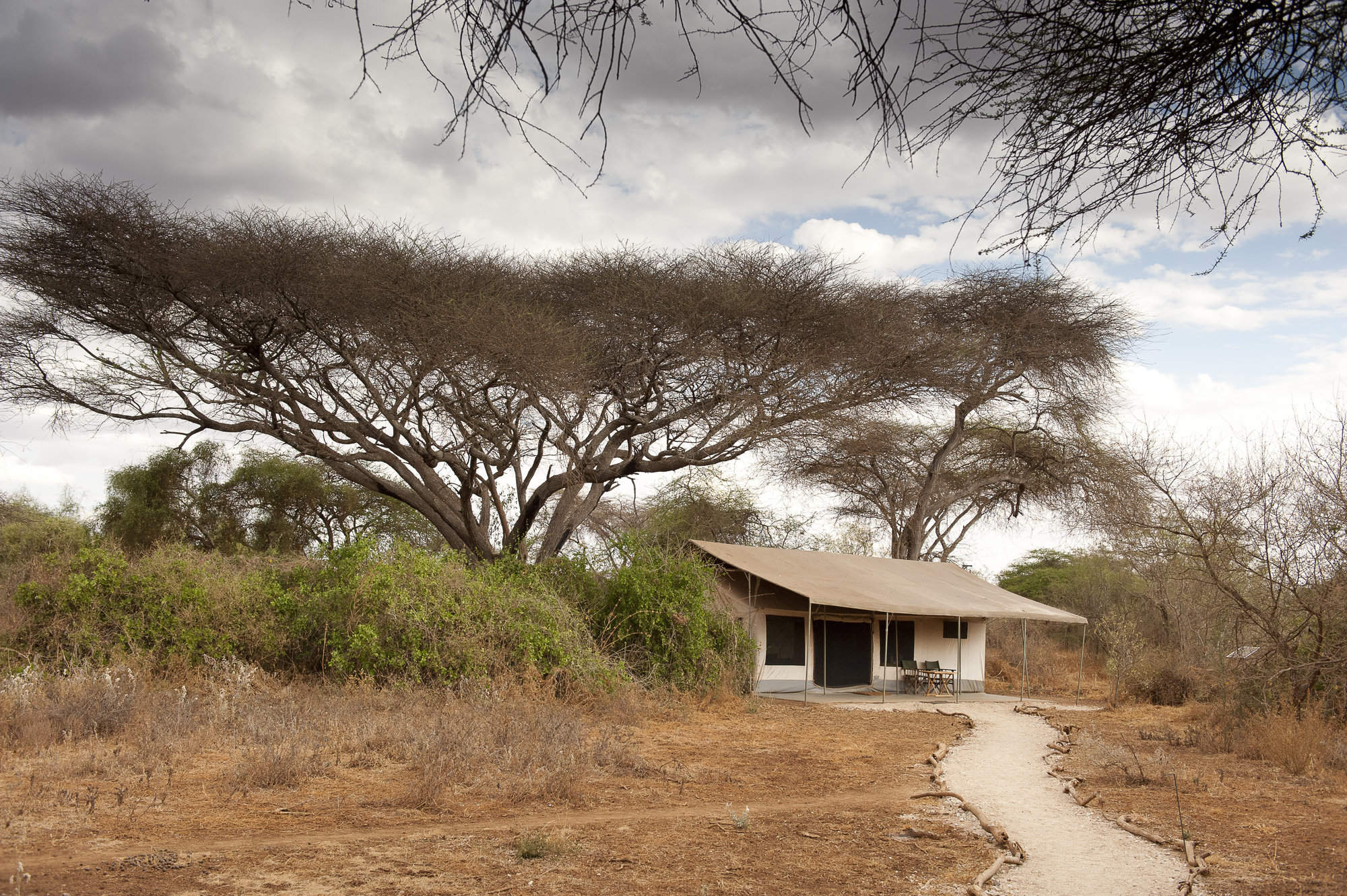
Porini Amboseli Camp
Porini Amboseli is a small and homely community-staffed eco-camp located in the Selankay Conservancy.
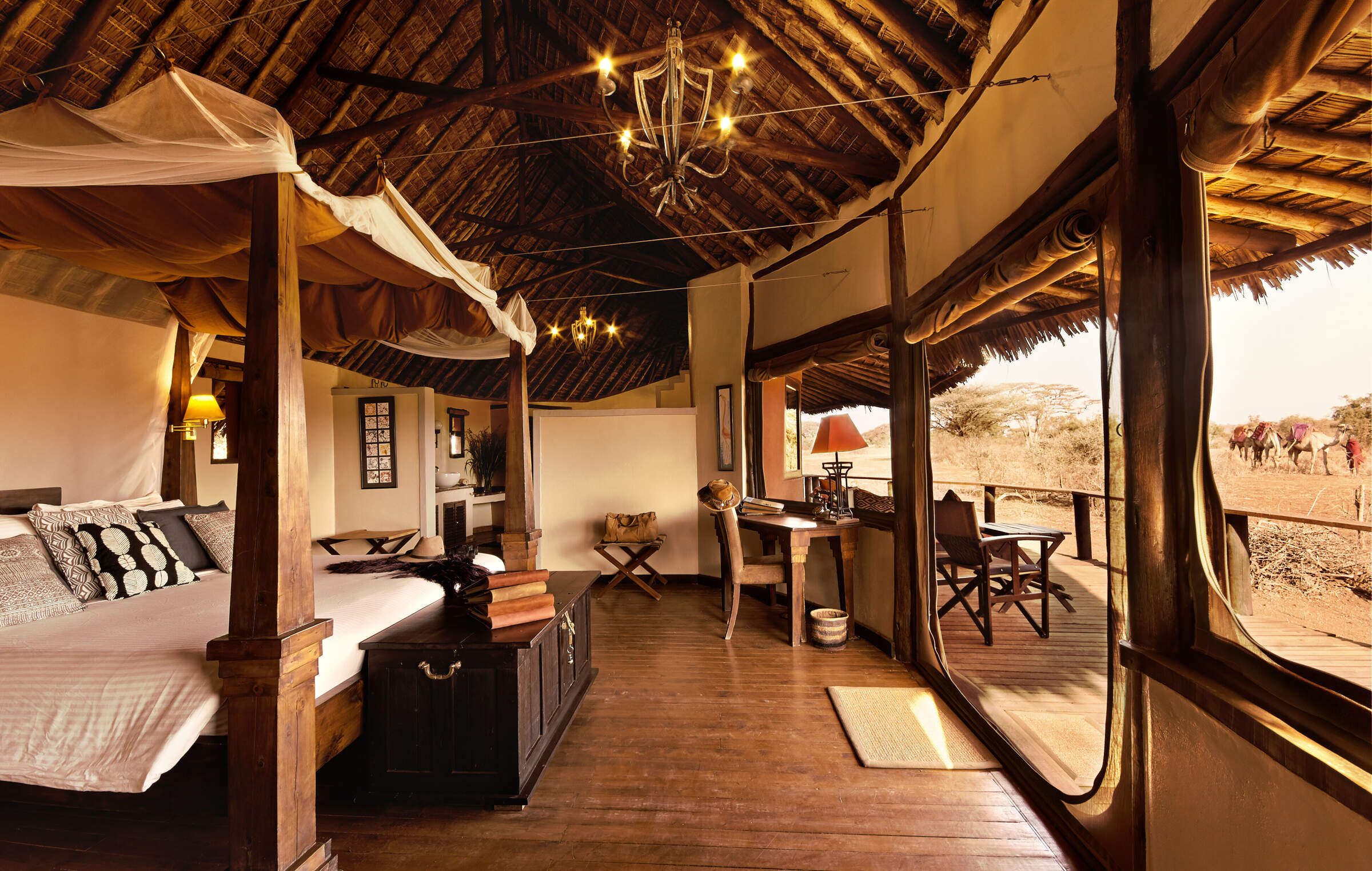
Tawi Lodge
Tawi Lodge is modern, luxury safari lodge on a private wildlife conservancy in the Amboseli ecosystem in southern Kenya.
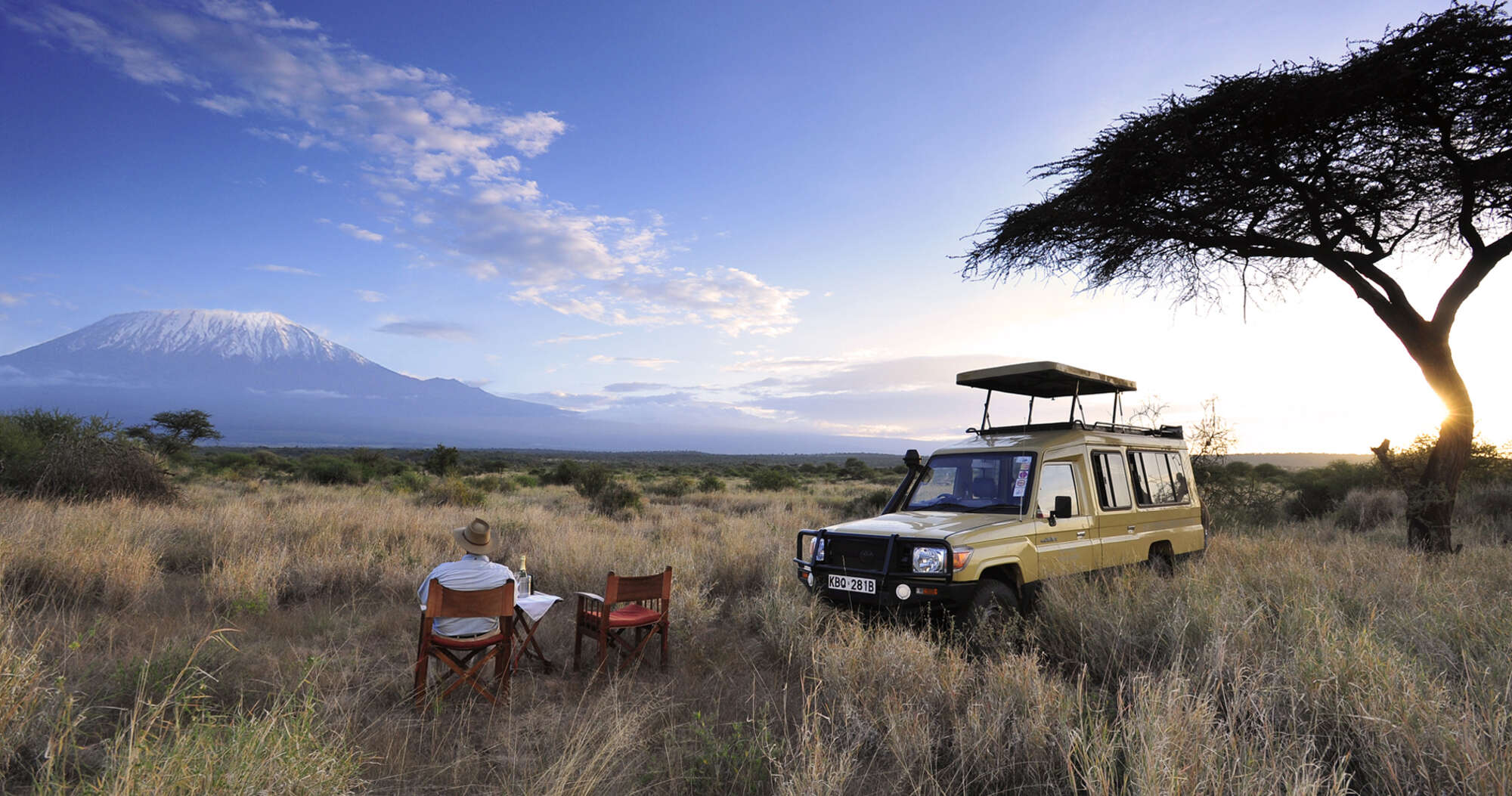
Satao Elerai
The closest camp in Kenya to Mount Kilimanjaro, Satao Elerai is located in its own, private conservancy, the Elerai Conservation Area, just outside Amboseli National Park.

Selenkay Adventure
Selenkay Adventure Camp is the dome-tent satellite camp of Porini Amboseli Camp, located in the Maasai-owned Selenkay Conservancy, one of the oldest community wildlife conservancies in Kenya.
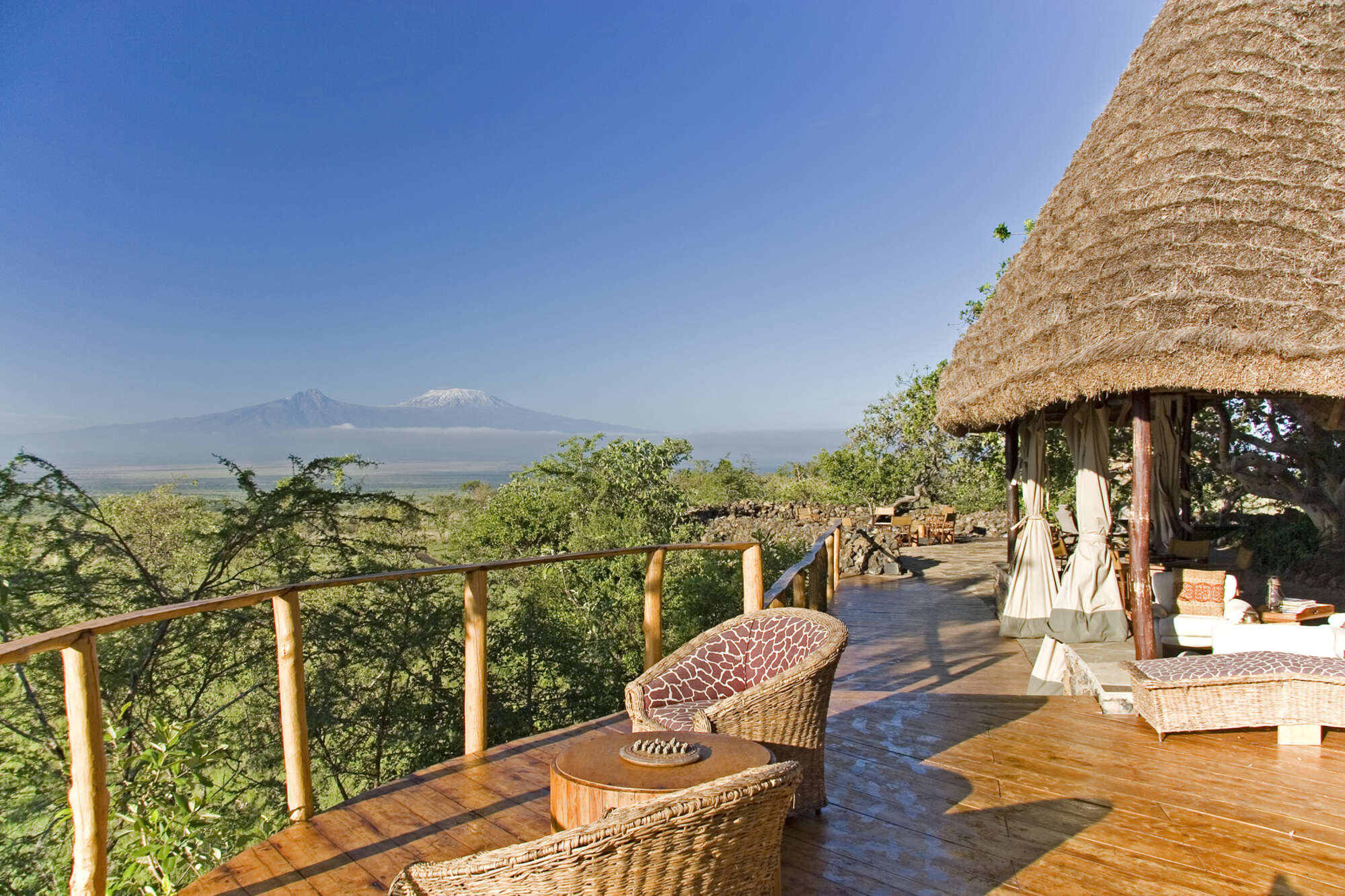
Campi ya Kanzi
Campi ya Kanzi is a very well integrated, eco-friendly bush lodge and tented camp on the slopes of the Chyulu Hills in its own, 1000-square-kilometre Maasai conservancy.
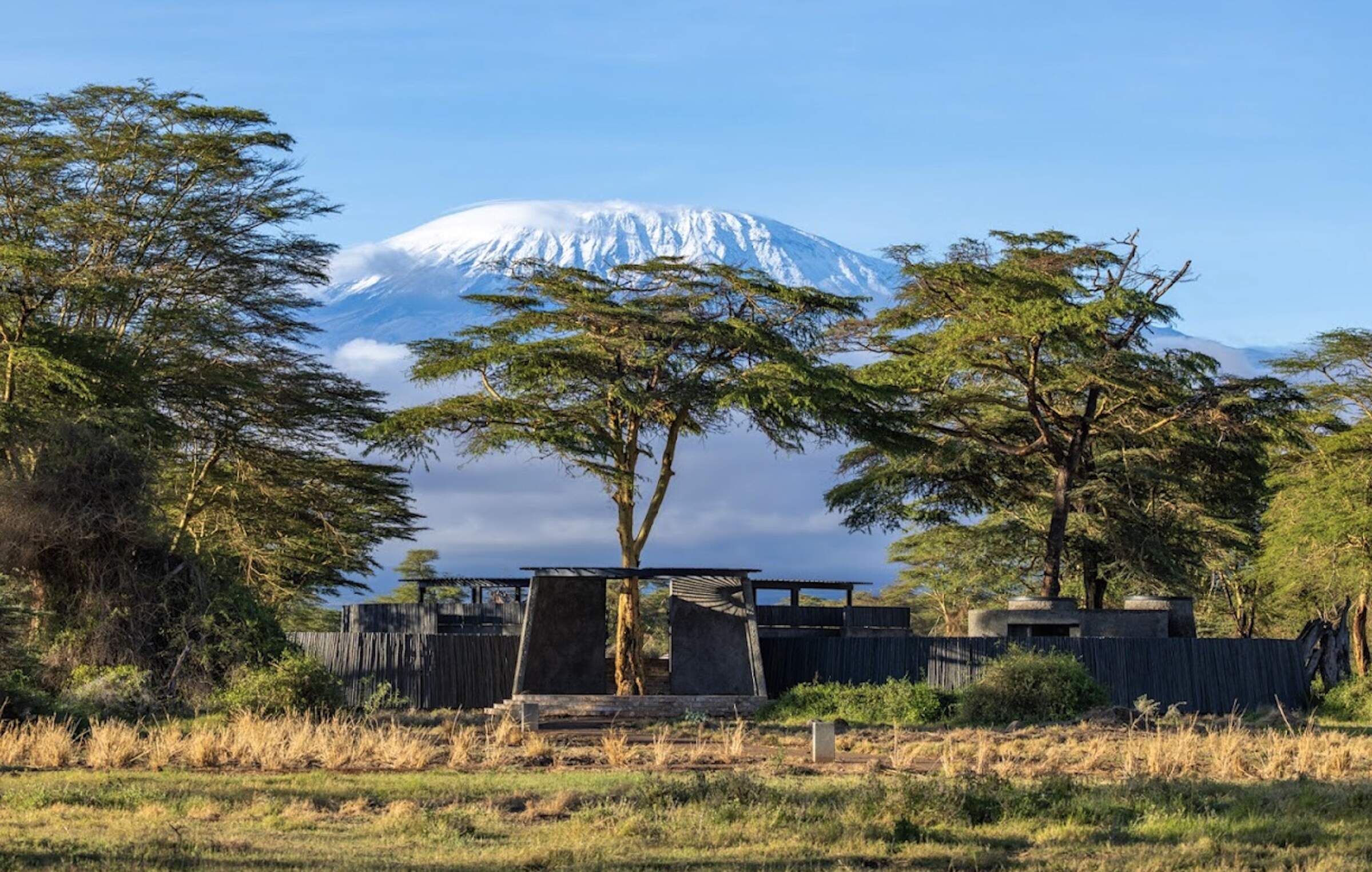
Angama Amboseli
Angama Amboseli is a luxury safari camp in the long-established Kimana Conservancy, about a 45-minute drive east of Amboseli National Park.
When to go to Amboseli and the Chyulu Hills
Our month by month guide: What it's like to visit Ol Donyo Lodge in Amboseli and the Chyulu Hills
Jan
Feb
Mar
Apr
May
Jun
Jul
Aug
Sep
Oct
Nov
Dec
Kenya in January
Clear, hot days and warm nights make this high season a popular time for safaris and it’s also good for diving and snorkelling as water clarity is excellent and gets better as the dry season progresses. Most lodges and tented camps treat January after the New Year week is over, as mid-season, making it a good compromise in terms of value for money with reasonably reliable, dry weather and some greenery left in the landscape.
Expert Africa bases its description of climate and weather in January, like the other months of the year, on the climate records of roughly the last 100 years, and it's fair to say that the weather and seasons since the beginning of this century have been highly irregular and unpredictable.
- On average, January is the second driest month of the year
- Elephants dig waterholes in the dry riverbed in the Samburu reserve.
- Wildebeest and many antelope have their calving season, to February.
- Migrant birds are seen in huge numbers, especially in the Rift Valley.
- Sea water clarity around the coral reefs generally good.
Our view
Fantastic: the very best time to visit
Weather in January
Kenya in February
With the short dry season well established, the grass grazed down and wildlife gathering close to water points, this is still a good time for a safari. Good water clarity in the Indian Ocean's coastal waters makes for excellent diving and snorkelling conditions.
Expert Africa bases its description of climate and weather in February, like the other months of the year, on the climate records of roughly the last 100 years, and it's fair to say that the weather and seasons since the beginning of this century have been highly irregular and unpredictable.
- On average, February is the driest month of the year.
- It’s sometimes possible to swim with whale sharks at Diani Beach.
- Migrant birds are still seen everywhere, especially near water.
- This is usually peak calving season for wildebeest and many antelopes.
- This month is often the hottest of the year, especially on the coast.
Our view
A very good time to visit
Weather in February
Kenya in March
Hot, increasingly humid weather – with good diving and snorkelling conditions at the start of the month – gives way to rains and lower accommodation costs. Expert Africa bases its description of climate and weather in March, like the other months of the year, on the climate records of roughly the last 100 years, and predicting the seasons since the beginning of this century has been difficult.
March is the month when – traditionally – intensely hot conditions build up until a cloudburst finally happens at the end of the month or in early April, to relieve the humidity. As ever, regional variations across the country can greatly impact on visitors' experiences.
- Sea-water clarity is best for diving before the long rains start.
- Visitor numbers are low, though the Easter holidays can be busier.
- Night skies can be scintillatingly clear in early March.
- Cropped down savannah grasses can make it easier to see the wildlife.
- Temperartures climb high, especially at lower elevations.
Our view
A good time to visit, with pros & cons
Weather in March
Kenya in April
April sees the full onset of the southeast monsoon wind or kusi, which heralds the long rains. Temperatures drop soon after the rains are established and you’ll often have facilities largely to yourself in this more affordable low season, sometimes known as the "green season". The bush quickly springs to life, with greenery sprouting almost before your eyes. While you're likely to get a fair number of heavy showers, the breaks in the rain can yield sparklingly clear conditions.
With the dust settled and bright sun piercing the clouds, conditions can be sublime for photography, especially first thing in the morning or in the late afternoon with another storm brewing. You may be lucky, or you may find conditions very wet and muddy.
- A wet month, the coast often gets more than 300mm (12in) of rain.
- Sunny spells can provide great light for photography.
- Buffalo and zebra calving season often happens in this month.
- Baby crocodiles hatch, for example on Central Island in Lake Turkana.
- Palearctic migrant birds gather to fly north to breeding grounds.
Our view
A time to avoid if possible
Weather in April
Kenya in May
While game viewing can be trickier as vegetation runs riot, between the cloudbursts the colours and light are great for photography at this time of year. Expert Africa bases its description of climate and weather in May, like the other months of the year, on the climate records of roughly the last 100 years, and while it's reasonable to expect heavy rains in many parts during this month, especially on the coast, the rains don't always come evenly or in some areas come at all.
In an El Niño year, the so-called long rains that normally are established across much of the country by May can be meagre, to the despair of farmers. On the other hand in a La Niña year, the long rains can bring floods. On the coast, the monsoon winds make the climate much more predictable, with heavy rains common throughout this month.
- Frogs breed in the ponds in the Arabuko Sokoke Forest near Watamu.
- Wildebeest, impala and other grazers are in rut (the breeding season).
- Kilimanjaro looks its best as heavy rain falls as snow on the summit.
- There's a sharp peek of rainfall on the coast with many rainy days.
- Accommodation prices are uniformly low, while some camps close.
Our view
A time to avoid if possible
Weather in May
Kenya in June
The rains give way to cloudy, cooler weather, often making for comfortable conditions by the end of the month, especially in the highlands. Starting from mid-June or the beginning of July and running until the end of October, this is the high season, and accordingly has higher accommodation rates and – at least until early September – higher numbers of visitors.
While the early part of June can often be rainy on the coast, it can be a great time to go on safari, with fresh greenery, many young animals and good photographic conditions with clear air.
- The Taru Desert, inland from the coast, is carpeted with flowers.
- The Lake Turkana Cultural Festival is held in Loiyangalani.
- Madaraka Day (commemorating self rule) is 1 June.
- The annual Lewa marathon runs a course through the wildlife.
- The Diani Rules "sports" event rips up the rulebook at Diani Beach.
Our view
A good time to visit, with pros & cons
Weather in June
Kenya in July
Kenya’s “winter" season sets in (winter is a misnomer but locals feel the change), and the highlands can be rather grey. Skies are often cloudy and the days can be surprisingly cool, with an average daytime high in many highland safari areas of 15-20°C and night-time temperatures dropping below 10°C in Nairobi and the highlands. Lower parts of the country and the coast are usually warm and dry, typically reaching highs of around 25°C with lows in the high teens.
As this is the start of the high season, coinciding with the usual arrival of the wildebeest migration in the Maasai Mara, July is a busy month. Ask your Expert Africa specialist to advise on how to avoid the crowds, which is not that difficult to do.
- The wildebeest migration usually reaches the Maasai Mara in July.
- Simbi Lake (Kisumu) and Crater Lake (Naivasha) can attract flamingoes.
- Watersports start to pick up and some surfing is possible at Malindi.
- Afternoon thunderstorms are a common feature in the Maasai Mara.
- The sea can be choppy along the coast, making diving difficult.
Our view
A good time to visit, with pros & cons
Weather in July
Kenya in August
The Great Migration fills the plains of the Maasai Mara, and school’s out, so the park roads are full of tourists – ask your Expert Africa specialist for advice on crowd avoidance tactics. Choose a private conservancy rather than a public national park or national reserve for quieter conditions.
Like July, August is generally mild and relatively dry in the safari areas, but it can be very chilly in the highlands, even in the middle of the day, and hail occasionally falls above altitudes of around 2,400m (8,000ft). Nairobi can be disappointingly overcast, with low cloud.
- Apart from Christmas holidays, this is the busiest month of the year.
- Late August sees peak wildebeest drama at the Mara River crossings.
- Coastal winds are good for kite- and wind-surfing.
- Few mosquitoes are around at this generally dry time of year.
- The annual Camel Derby takes place in the Samburu capital, Maralal.
Our view
A good time to visit, with pros & cons
Weather in August
Kenya in September
The skies clearing of cloud signals the start of hot, dry weather with little chance of rain – and, after the first few days of the month, far fewer visitors – making the latter part of September a good time for a quieter safari. While early September is often good for dramatic migration crossings along the Mara River, you might consider deliberately postponing your trip until later in the month, when the migration can still be very impressive and visitor numbers fewer.
If tourist surges are somewhat predictable, however, the patterns of the wildebeest migration are more volatile, and like all of Expert Africa's climate and weather assessments, they are based on accumulated years of experience rather than guaranteed certainty.
- This is still high season, with prices to match.
- Many river crossings take place on the Mara river in both directions.
- Natural bush fires flush out insects and small animals for predators.
- The Rift Valley Music Festival takes place by Lake Naivasha.
- With school holidays over by early September, late-month is quieter.
Our view
Fantastic: the very best time to visit
Weather in September
Kenya in October
Still hot, mostly dry and not too busy, this is many people’s preferred month for a safari, and it’s also good for diving and snorkelling. The wildebeest and zebra herds of the great migration are often still to be seen, though in dwindling numbers. The swamps of Amboseli attract thirsty wildlife including large herds of elephants.
While we wouldn't expect much rain across most of the country this month, the climate has become so unpredictable that you can never say never, and the possibiity of the short rains – usually associated with November to mid-December, starting early, can't be discounted.
- This month sees the tail end of the great migration in the Mara.
- Palearctic migrant birds start to arrive, staying until March.
- Turtle nests hatch at Watamu, until November.
- Amboseli elephants focus on the swamps for their daily water.
- The Indian Ocean monsoon winds turn from southeast to northeast.
Our view
A very good time to visit
Weather in October
Kenya in November
The northeast monsoon wind or kaskazi heralds the start of the “short rains", usually some time in the second half of the month. From November to mid-December, this is the low season, and accordingly has lower accommodation rates and lower visitor numbers. Across most of the country you can expect warm, somewhat cloudy weather, with occasional heavy showers and localised flooding.
Expert Africa bases its description of the climate in November, like the other months of the year, on the records of roughly the last 100 years, and it's fair to say that the seasons since the beginning of this century have been highly irregular and unpredictable: some years the short rains don't come at all, or don't reach every part of the country. In an El Niño year, the November short rains can be very heavy, but in a La Niña year, they can fail completely.
- Swimming with dolphins in Lamu can be done from now until April.
- Birders gather at Ngulia in Tsavo West to ring Palearctic migrants.
- The Lamu Cultural Festival takes over the town and Lamu Creek.
- Agricultural shows often take place regional market towns.
- This is low season, so camps can be great value, with special offers.
Our view
A good time to visit, with pros & cons
Weather in November
Kenya in December
In a typical December, the rains usually finish by middle of the month, leaving the landscape looking its best, under clear blue skies, and heralding the start of the second peak tourist season from around 20 December to the first week of January. Our assessment of the likely weather in December, like the other months of the year, is based on climate records, and it's fair to say that the seasons since the beginning of this century have been highly irregular and unpredictable.
Christmas can sometimes be wet, but most years the rains have finished a week or two earlier, with the festive season ushering in the perfect combination of clear skies and sunshine by day and starry nights.
- Christmas and New Year are busy, with the lodges and camps full.
- Rates are highest after 24 Dec, with supplements on public holidays.
- Republic Day and Independence day are celebrated on 12 December.
- Good kite- and wind-surfing restarts, with strong northeasterly winds.
- Mango season begins, providing excitement for primates and elephants.
Our view
A good time to visit, with pros & cons
Weather in December

Looking for inspiration on where to travel next?
Visit our trip chooser to explore your options and find inspiration for your perfect African adventure
Inspire me